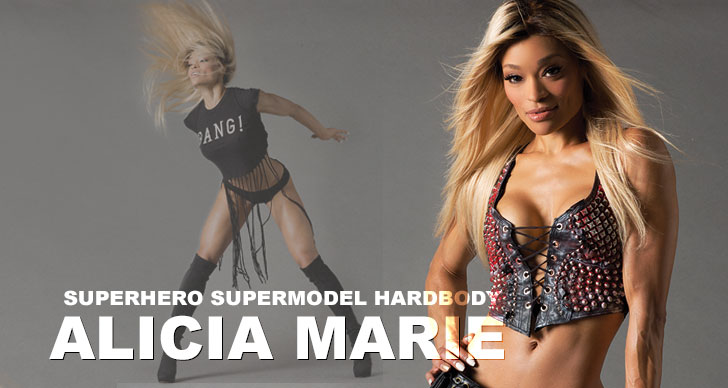 Take your eyes off of my brilliant, mesmerizing prose for a moment, and look at your arm. In one year every cell in that arm will be a new one. You will essentially have a new arm. Let’s extend that concept to something near and dear to your heart—you will also have new delts, quads and pecs next year. How well you nourish those new cells will determine, to a significant extent, how responsive they will be to your training.
Take your eyes off of my brilliant, mesmerizing prose for a moment, and look at your arm. In one year every cell in that arm will be a new one. You will essentially have a new arm. Let’s extend that concept to something near and dear to your heart—you will also have new delts, quads and pecs next year. How well you nourish those new cells will determine, to a significant extent, how responsive they will be to your training.
This leads me to the topic of epigenetics—a biological school of thought that although we cannot alter our genetic structure or sequence, we can influence the expression of aspects of our genetic inheritance. An analogy would be the buttons for different floors on an elevator.
Just because we have a ninth floor and a 141st floor doesn’t mean we have to push those buttons. Our genes may have a fat button or a heart disease button that we would seek not to press. Eating food that our bodies were designed to eat is a very potent way to not push those undesirable buttons.
We also may have beneficial genetic traits, such as endurance, immunity and potential for strength. Those buttons get pressed with the appropriate foods as well. I’m not going to get into specific foods here, although I discussed some of them in previous columns. My purpose here is to talk a little about holistic nutrition philosophy and its theoretical framework.
Every species, including homo sapiens (that’s us), has an evolutionary priority of needs to survive and reproduce. That’s basic Darwinism. So, if you have an infection, bacteria imbalance in your digestive system or a latent nutritional deficiency and you train your lats, where do you think your body will apply its resources? Your body will not be interested in making your lats wider or thicker. Mother Nature demands that your body concentrate on survival. That’s why I require my clients to be on a basic nutritional and supplement regimen. You must create the environment in your body that enables you to profit maximally from your training.
The better nourished people are, the fewer cravings they tend to have. When prehistoric humans craved something salty or slightly sweet, their bodies were giving them clear instructions. Perhaps they were running low on sodium or some B-vitamin. Then they would eat something salty or a fruit that had that missing vitamin, and the craving would begin to be satisfied. Natural unprocessed foods tend to contain the nutrients that quench the cravings caused by a deficiency of those very nutrients.
Now what happens in modern society? The wisdom of your body’s self-communication breaks down. Modern man craves something sweet, and he reaches for a candy bar. The bar does not have that nutrient his body is searching for, so the cravings amplify and he moves on to pies and cookies.
We have all kinds of processed junk foods that taste like what we crave but can never truly satisfy the craving—still another reason that I advocate a basic supplement and nutrient program for everyone who wants to thrive in overall health as well as in bodybuilding.
Remember the end of “The Matrix,” when “Neo” cracks the computer’s code and is able to destroy all of the evil “agents” at will. All of a sudden he can see the computer’s information streaming in his mind, and he’s no longer at its mercy. Neo’s ability to decipher this information enables him to achieve another level of reality. Well, nutrition and food are an information code to your cells, just as a computer language is to your PC.
So, when your contest-prep coach talks to you about calories, macronutrient percentages, grams of protein, carbs and fat, he or she is addressing nutrition at its crudest and most obvious level. The next level of reality—and one mastered by precious few nutritionists (much less prep coaches)—is what information and instructions your food choices and supplements give to your body.
Make no mistake, food is information. The right information and instructions result in health, growth and longevity. The wrong ones, well, you can guess. This concept is related to epigenetics but is not truly the same. Gene expression occurs over a protracted period, whereas food information can influence hormone secretion, anabolism and metabolic rate, among other factors, within a short time of eating. When you learn the language of food, you can get your body to do things that you were unable to achieve before.
My final topic this month is the calorie model of bodyweight management and metabolism. The concept was hatched almost 200 years ago. To determine how many calories in a food, a device called a bomb calorimeter completely bums it, sometimes at up to 1800 degrees Fahrenheit, and then measures how much energy—heat—is produced. The energy is expressed in calories. The theory goes that if you take in more calories than you “bum,” you must gain weight. Conversely, if you take in fewer calories than you expend, you will lose weight. That is the old thermodynamic theory of calorie burning, and it’s what’s taught to registered dieticians and in universities worldwide. It sounds logical, but in real life it doesn’t work.
First, we are not mechanical heating devices. The thermodynamic paradigm does not take into account the calories expended to metabolize a given food. For instance, a high-protein, low-carb food will require four more times the calories to digest and process than a high-carb, low-protein food. As an example, 100 calories of 99 percent lean turkey breast may require your body to expend 30 calories to metabolize it. So the net calories available for the fueling of the other activities of your body is only 70. In contrast, 100 calories of white bread may require six calories to metabolize, netting the body 94 calories of utilizable fuel. Fats require even fewer calories to metabolize than carbs, but don’t dismiss them just yet.
Second, the thermodynamic theory of weight management does not take into account the hormonal environment caused by a given food. Insulin secretion caused by excess carbohydrates will have a propensity to store fat even when there is a calorie deficit. You can see evidence of that in poor third world countries where inexpensive-carbohydrate-dominated diets contribute to a segment of the population (usually women) being obese. Those same individuals often don’t have enough to eat overall and take in relatively few calories, but chronically high insulin levels steer their bodies to stop using bodyfat for energy and lead to more fat storage.
Not that calories are irrelevant, but it’s my belief that they are only 40 percent of the equation in a weight-loss program. The other 60 percent is mastering your hormonal environment. If you have resorted to doing two hours of cardio to get into contest shape, you are not in control of your hormones. Quite the opposite, your hormones are controlling you.
These are just a few enlightened nutritional concepts discussed by holistic practitioners that have not made it to the bodybuilding world. Learn how to use them, and you will begin to gain mastery over your body’s response to the demands you make of it.
—Ron Noreman
Editor’s note: Ron Noreman (RonNoreman.com) is a partner at Kamler, Lewis & Noreman LLP (KLNcpas.com), a certified public accounting firm that specializes in tax representation and management of professional athletes, nutritional-supplement companies and weight-training-equipment manufacturers. He has been a competitive bodybuilder for 35 years and has won numerous titles. He’s also the founder of Alchemy Nutrition and offers contest-prep coaching and holistic-nutrition consultations. In addition, he has formulated antioxidant supplements for prominent vitamin companies and served as a design consultant to Nebula and other equipment manufacturers.






















You must be logged in to post a comment Login